Uber- Ultra- Hyper- Hyper-Gogen+ and Golden-Gogen Puzzle Books from Amazon
Not bookmarking pages? Just Google "Grosse Gogen" to find them.
These books contain puzzles that have never been published before. They come in various sizes and difficulty levels from:
- The 2023 one puzzle each day diary with 365 puzzles with the golden gogen puzzle on the front containing 104 UberGogen puzzles, 104 UltraGogen puzzles, 52 HyperGogen puzzles, 52 HyperGogen+ puzzles and 53 GoldenGogen puzzles. Each week starts off on Monday with an UberGogen, then, as the week unfoldes, it goes: UltraGogen, HyperGogen, UberGogen, UltraGogen, then for the weekend HyperGogen+ and finally GoldenGogen; then,
- The 300-puzzle-sized books with the papyrus with the hieroglyphs or hieratic scipt on the front containing 250 HyperGogen puzzles with 25 each of Uber- and Ultra-Gogen to get you warmed up (or if you have given it as a present to somebody that has never seen one before, this gives them a chance); to,
- the 250-puzzle Uber- and Ultra-Gogen books with the Netherlandish paintings of cats on the front; to,
- the 150-puzzle Uber-, Ultra-and Golden-Gogen books with the Da Vinci-style silverpoint drawings of machinery on the front; to,
- the thinner, 100-puzzle books with half-uncial, carolingian, old Persian cuneiform and Kharoshthi script on the front cover each book containing 25 puzzles each type running from UberGogens to the fiendish HyperGogen+ puzzles; and,
- The Pocket books are smaller at 5"x8" with 50 puzzes in - ten of each type - with the Gonzo-style ink drawn pictures on the front are small and easy to carry around and yet have the same standard of puzzles in as all of the other books. They are ideal for people who want to try out these puzzles for the first time.
- the Large Print versions are of the 100 puzzle books above. Each of the books has the same puzzles in it but it is in large print - Helvetica font of at least 18 point. I have priced these the same as the smaller versions so that people who need larger print can have the pleasure of doing the puzzles without being penalised for needing larger print. Of course, you might want to use the extra space that the large print version provides for working out these puzzles in which case and if the physical size is not an issue go for the larger version.
Something for everybody.
Click on the link in the table and then on the Amazon link of your choice to get to the Amazon page that you want. If you haven't got time right now, just Google 'Grosse Gogen' or even 'Gross Gogen'
The puzzles are printed one per page so that you have enough room on there to do all of your working out and some puzzles need a lot of working out. These are not printed two on a page like Crosswords or wordsearch puzzles - people don't get enjoyment from puzzles that are cramped into such an unnecessarily small space that you cannot make out your working out so here, you have one puzzle per page which, with many of them, you will probably need.
| |||||||||||||||||||||||||||||||||||||||||||||||||||||||||||||||||||||||||||||||||||||||||||||||||||||||||||||||||||||||||||||||||||||||||||||||||||||||||||||||||||||||||||||||||||||||||||||||||||||||||||||||||||||||||||||||||||||||||||||||||||||||||||||||||||||||||||||||||||||||||||||||||||||||||||||||
| *Only available at end/beginning of year. | |||||||||||||||||||||||||||||||||||||||||||||||||||||||||||||||||||||||||||||||||||||||||||||||||||||||||||||||||||||||||||||||||||||||||||||||||||||||||||||||||||||||||||||||||||||||||||||||||||||||||||||||||||||||||||||||||||||||||||||||||||||||||||||||||||||||||||||||||||||||||||||||||||||||||||||||
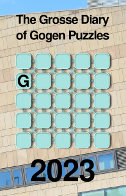 |
|
2023 Diary. 434 pages 14 x 21.6 x 2.8cm (5.5 x 8.5 x 1.1") 365 Puzzles £14.99 Buy from Amazon.com Amazon.co.uk |
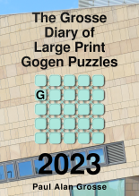 |
|
2023 Diary. 431 pages 21 x 29.7 x 2.8cm (8.3 x 11.7 x 1.1") 365 Puzzles £14.99 Buy from Amazon.com Amazon.co.uk |
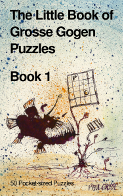 |
|
Book 1. 62 pages 12.7 x 20.3 x 0.4cm (5.0 x 8.0 x 0.2") 50 Puzzles £5.95 Buy from Amazon.com Amazon.co.uk |
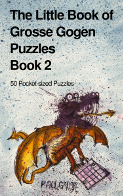 |
|
Book 2. 62 pages 12.7 x 20.3 x 0.4cm (5.0 x 8.0 x 0.2") 50 Puzzles £5.95 Buy from Amazon.com Amazon.co.uk |
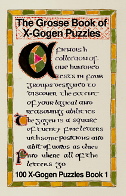 |
|
Book 1. 122 pages 14 x 21.6 x 0.8cm (5.5 x 8.5 x 0.3") 100 Puzzles £7.99 Buy from Amazon.com Amazon.co.uk |
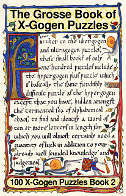 |
|
Book 2. 124 pages 14 x 21.6 x 0.8cm (5.5 x 8.5 x 0.3") 100 Puzzles £7.99 Buy from Amazon.com Amazon.co.uk |
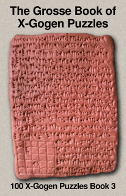 |
|
Book 3. 124 pages 14 x 21.6 x 0.8cm (5.5 x 8.5 x 0.3") 100 Puzzles £7.99 Buy from Amazon.com Amazon.co.uk |
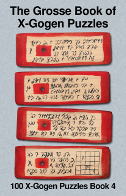 |
|
Book 4. 124 pages 14 x 21.6 x 0.8cm (5.5 x 8.5 x 0.3") 100 Puzzles £7.99 Buy from Amazon.com Amazon.co.uk |
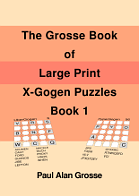 |
|
Book 1. 122 pages 21 x 29.7 x 0.8cm (8.3 x 11.7 x 0.3") 100 Puzzles £7.99 Buy from Amazon.com Amazon.co.uk |
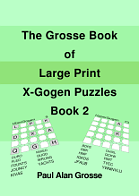 |
|
Book 2. 122 pages 21 x 29.7 x 0.8cm (8.3 x 11.7 x 0.3") 100 Puzzles £7.99 Buy from Amazon.com Amazon.co.uk |
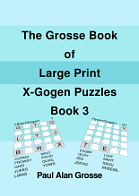 |
|
Book 3. 122 pages 21 x 29.7 x 0.8cm (8.3 x 11.7 x 0.3") 100 Puzzles £7.99 Buy from Amazon.com Amazon.co.uk |
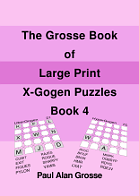 |
|
Book 4. 122 pages 21 x 29.7 x 0.8cm (8.3 x 11.7 x 0.3") 100 Puzzles £7.99 Buy from Amazon.com Amazon.co.uk |
 |
|
Book 1. 182 pages 14 x 21.6 x 1.2cm ;(5.5 x 8.5 x 0.5") 150 Puzzles £7.95 Buy from Amazon.com Amazon.co.uk |
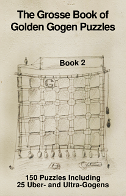 |
|
Book 2. 182 pages 14 x 21.6 x 1.2cm ;(5.5 x 8.5 x 0.5") 150 Puzzles £7.95 Buy from Amazon.com Amazon.co.uk |
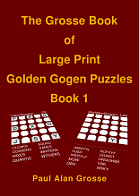 |
|
Book 1. 180 pages 21 x 29.7 x 1.2cm (8.3 x 11.7 x 0.5") 150 Puzzles £7.95 Buy from Amazon.com Amazon.co.uk |
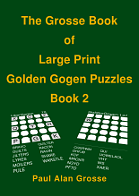 |
|
Book 2. 180 pages 21 x 29.7 x 1.2cm (8.3 x 11.7 x 0.5") 150 Puzzles £7.95 Buy from Amazon.com Amazon.co.uk |
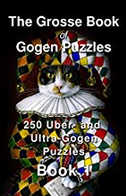 |
|
Book 1. 296 pages 14 x 21.6 x 1.9cm (5.5 x 8.5 x 0.7") 250 Puzzles £9.95 Buy from Amazon.com Amazon.co.uk |
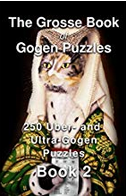 |
|
Book 2. 296 pages 14 x 21.6 x 1.9cm ;(5.5 x 8.5 x 0.7") 250 Puzzles £9.95 Buy from Amazon.com Amazon.co.uk |
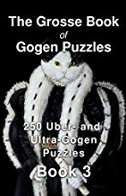 |
|
Book 3. 296 pages 14 x 21.6 x 1.9cm (5.5 x 8.5 x 0.7") 250 Puzzles £9.95 Buy from Amazon.com Amazon.co.uk |
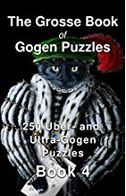 |
|
Book 4. 296 pages 14 x 21.6 x 1.9cm (5.5 x 8.5 x 0.7") 250 Puzzles £9.95 Buy from Amazon.com Amazon.co.uk |
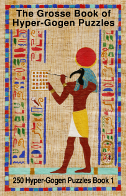 |
|
Book 1. 356 pages 14 x 21.6 x 2.1cm (5.5 x 8.5 x 0.8") 300 Puzzles £11.99 Buy from Amazon.com Amazon.co.uk |
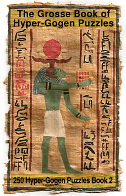 |
|
Book 2. 356 pages 14 x 21.6 x 2.1cm (5.5 x 8.5 x 0.8") 300 Puzzles £11.99 Buy from Amazon.com Amazon.co.uk |
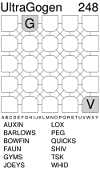
The UberGogen, UltraGogen, HyperGogen, HyperGogen+ and GoldenGogen puzzles in these books go from: the easiest you can find on this site on a Monday that will take you ten minutes to do (a bit longer for the HyperGogen - a few hours in some cases); to the hardest ones that you get on a Sunday - to give you an idea, the one below-left isn't the hardest I have done and it took me about an hour. Try today's Uber- and UltraGogen puzzles by clicking Here or the HyperGogen puzzle by clicking Here.
For the uninitiated, a Gogen puzzle has a 5x5 array of cells within which the letters A-Y are placed. Some of those letter positions are given to you as cells that are filled in for you. To find the rest of them, you are given word clues that show you where the missing letters go. Usually, there are nine cells given away and the word clues provide all of the letters in the words. With an UberGogen, not all of the letters are given in the clues. With the UltraGogen, fewer clue cells are filled in for you but all of the letters are in the word clues. There is a tutorial here for you, explaining the subject in more detail.
The HyperGogen doesn't allow you the comfort of using real words, except by coincidence so being fairly confident about the 'q being next to the 'u' or that a word is going to have a vowel or a semi-vowel in it, for example. is gone. Also, letters can be repeated within clues, clues are allowed to be only two letters long and so on: all you have left is logic itself. The Hypergogen+ is the same except that you also have a word that is ten or more letters long to find. One might argue that by adding a long real word, it makes locating the letters easier but only if you happen to guess the word first - and correctly. I will let you be the judge of that.
The GoldenGogen is like the HyperGogen except that the layout is designed by me, not the computer, and now, you can have puzzles with only one clue letter in them. In fact a number of the puzzles that appear to have more that one clue letter have only one or several blocks of isolated links. Have fun. Some are easy, some are difficult if you map out the letter links, you will see something more.
Each Grosse Book of Gogen Puzzles book consists of 250 puzzles that are all new, never been published - 125 Uber-Gogen puzzles and 125 Ultra-Gogen puzzles - along with the answers at the back and, as you would expect, they increase in difficulty as you work your way through them. You can see on the 'Look inside' feature on Amazon's website, what the puzzles look like - they are printed on a 5½"x8½" page which is a bit narrower than DIN A5 paperback format on off-white paper so they are easy on the eye, a good, practical size and will still fit in your pocket - take it with you anywhere and get stuck into it whenever you want. There is literally hundreds of hours' worth of entertainment in each book.
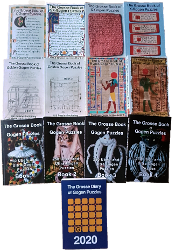
The Grosse book of HyperGogen Puzzles has 25 each of UberGogen and UltraGogen to get you started or, if you are buying one for somebody that has never done these puzzles before, they will introduce to them the way that the puzzle works so that they can get stuck into the 250 HyperGogen puzzles that follow.
The X-Gogen books have one hundred puzzles - 25 each of UberGogen, UltraGogen, HyperGogen and HyperGogen+. The latter of these is the same as a normal HyperGogen but within the puzzle is hidden a 9+ letter word that you have to find. The X-Gogen book is small at just over 120 pages with 100 puzzles plus answers but it is aimed at pocket money sized presents for children to get their puzzle addict parents for birthdays, Christmas or other special days - or even for going on holiday - there being the large print versions for people with poorer eyesight who like to do them as well.
The GoldenGogen books have one hundred and fifty puzzles - 25 each of UberGogen and UltraGogen then 100 GoldenGogen puzzles. The latter of these is like a HyperGogen+ (ie, it has within it hidden a 9+ letter word that you have to find) but the puzzle layout itself is designed by hand and there is no limit as to how close the clue cells can be to each other. There are also large print versions for people with poorer eyesight who like to do them as well - again, these have the same puzzles in them as the smaller books. Alternatively, you dont't need to have poor eyesight to have a large print copy, you can use the extra space in the large print books as more working out space.
The large print versions have the same puzzles as the smaller books of the same name but they use Helvetica as the font (the others do as well but Helvetica is specified as an easy-to-read font) of at least 18 points and the paper size is DIN A4.
So, whether you are yourself, a hardened puzzle junkie, someone who wants to become one or you need to find a gift for somebody that is one, this is the only place you will find them.
There are fourteen regular books and eight large print books with a total of 2,400 unique puzzles and you can go to each book's Amazon page by clicking on the links above. Amazon deals with payment and will send the books you order to any address you specify and wrap them as gifts if you want them to.
Have Fun.
Copyright ©2019-2023 Paul Alan Grosse.